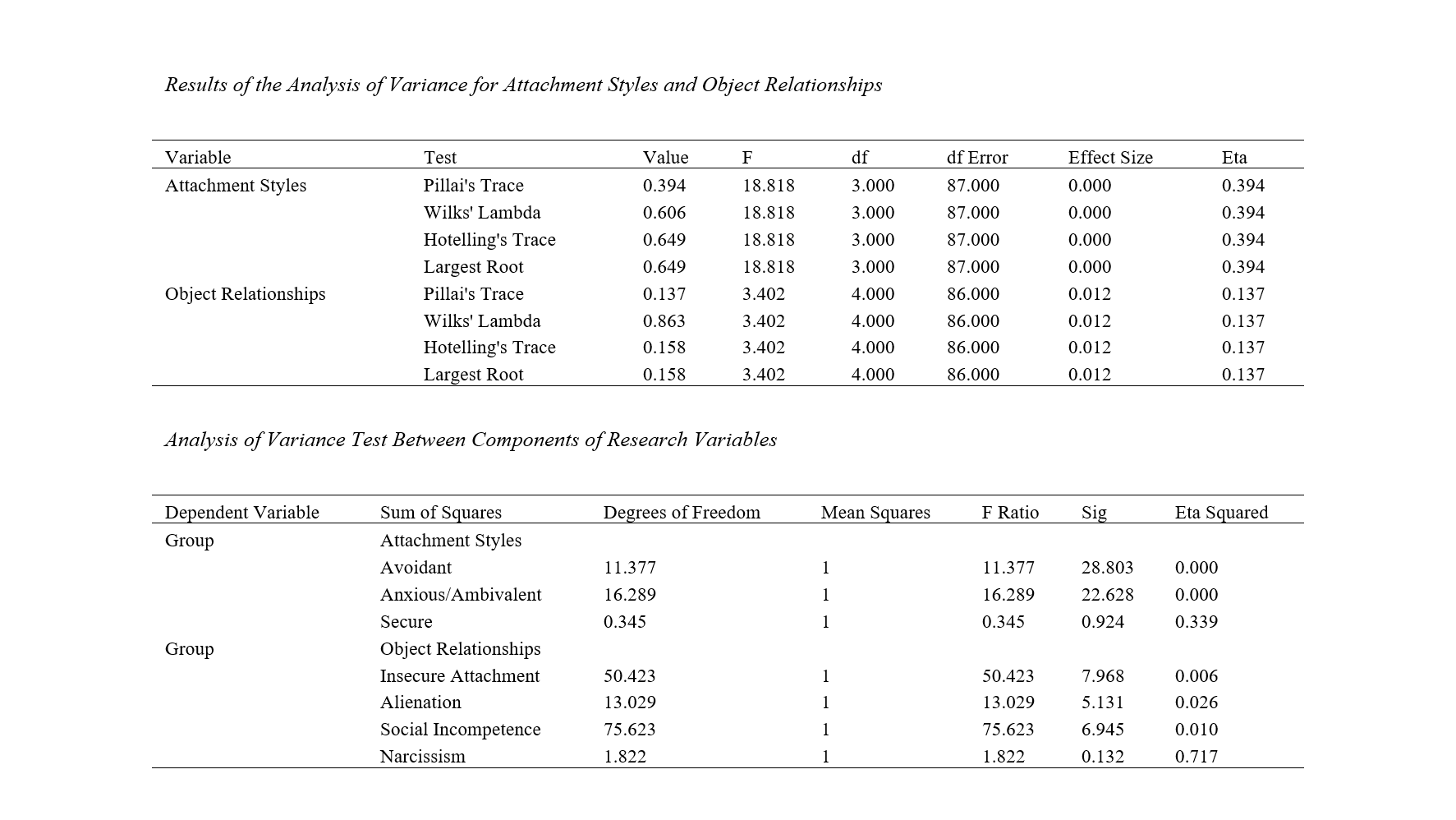Comparison of Attachment Styles and Object Relationships Among Women Engaged in Romantic Relationships with an Age Difference of 10 Years or Less and an Age Difference of 15 Years or More (with the Man Being Older)
Abstract
Objective: The present study aimed to compare the attachment styles and object relationships among women engaged in romantic relationships with an age difference of 10 years or less and an age difference of 15 years or more (with the man being older).
Methods and Materials: This was a causal-comparative study; the population consisted of 91 individuals, with 50 participants in the first group (women involved in romantic relationships with an age difference of 10 years or less) and 41 participants in the second group (women involved in romantic relationships with an age difference of 15 years or more), selected via convenience and snowball sampling methods. Participants responded to the Hazan and Shaver (1987) Attachment Style Questionnaire and the Bell (1995) Object Relationships Questionnaire. Data were analyzed using multivariate analysis of variance (MANOVA) with SPSS software.
Findings: The results showed a significant difference between the two groups in the anxious/ambivalent attachment style and the avoidant attachment style (P<0.01). There was a significant difference between the two groups in the insecure attachment, alienation, and incompetence components from the object relationships variable (P<0.05). Also, there was no significant difference between the two groups in the secure attachment style and the self-centeredness component (object relationships) (P>0.05).
Conclusion: It is recommended that decision-makers and practitioners in the fields of education, training, and culture pay attention to educating parents on correcting child-rearing styles to amend educational patterns, emphasizing the significant role of fathers in the psychological well-being of children, especially daughters.
Downloads

Downloads
Additional Files
Published
Submitted
Revised
Accepted
Issue
Section
License
Copyright (c) 2024 Kimia Habibzadeh (Author); Maryam Rostamnezhad (Corresponding Author)

This work is licensed under a Creative Commons Attribution-NonCommercial 4.0 International License.








